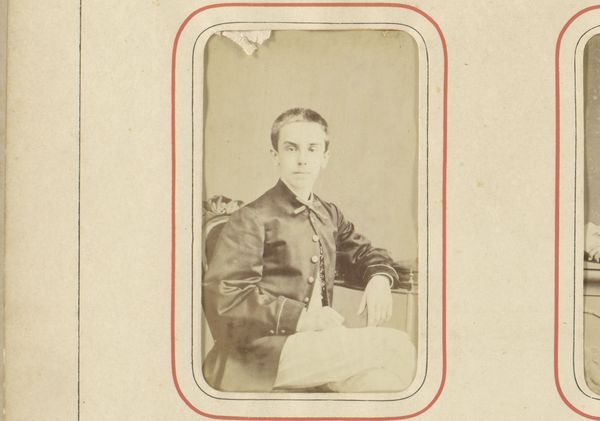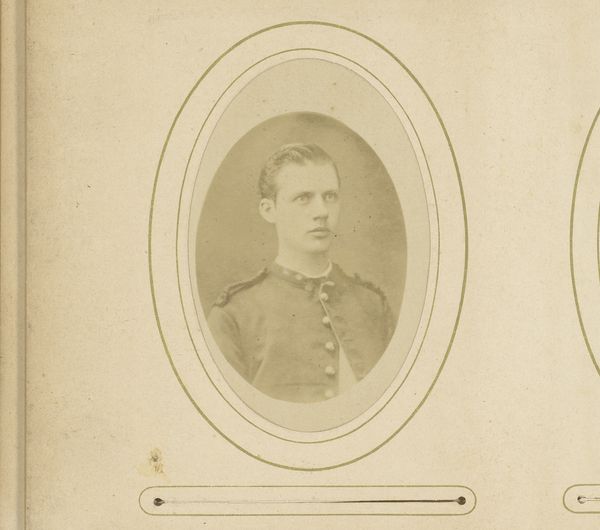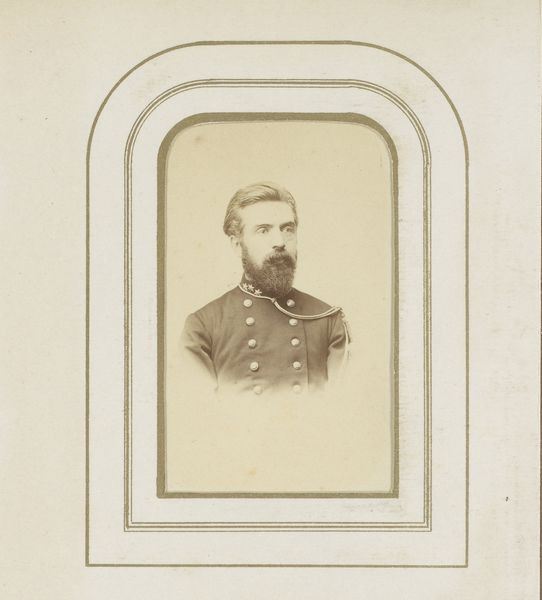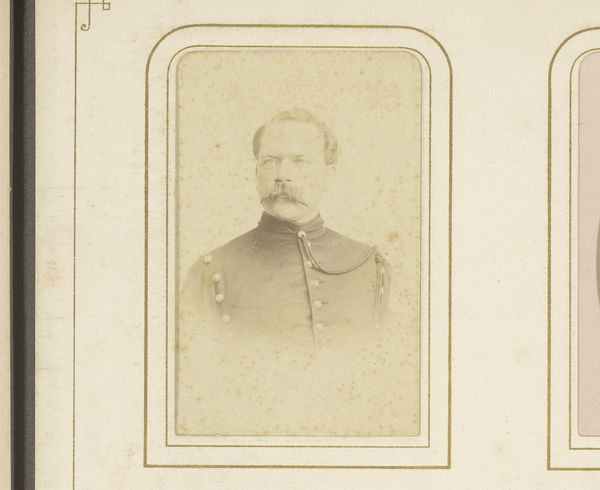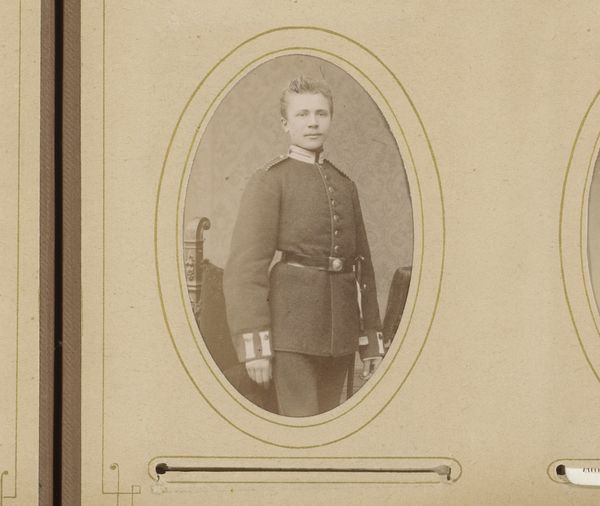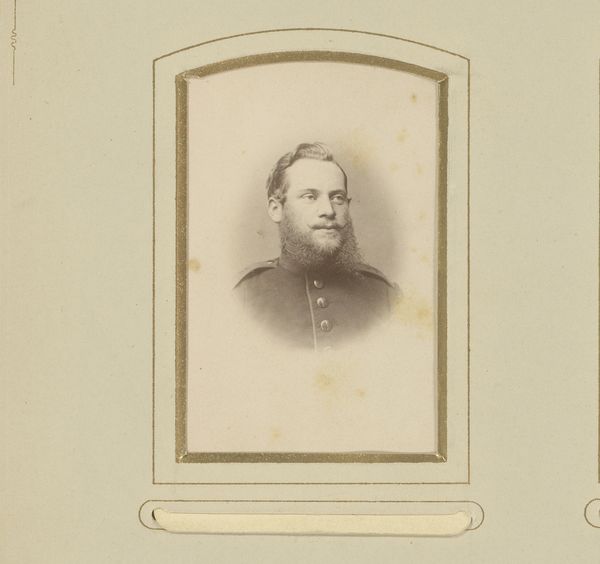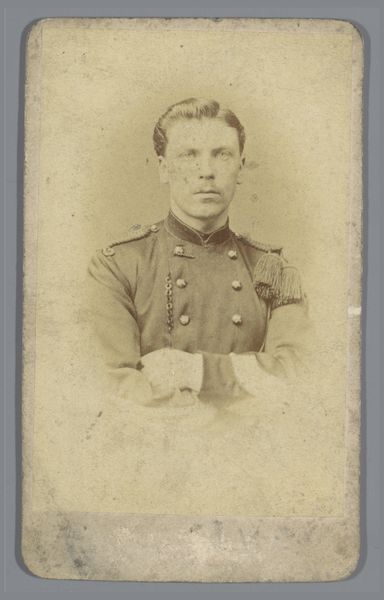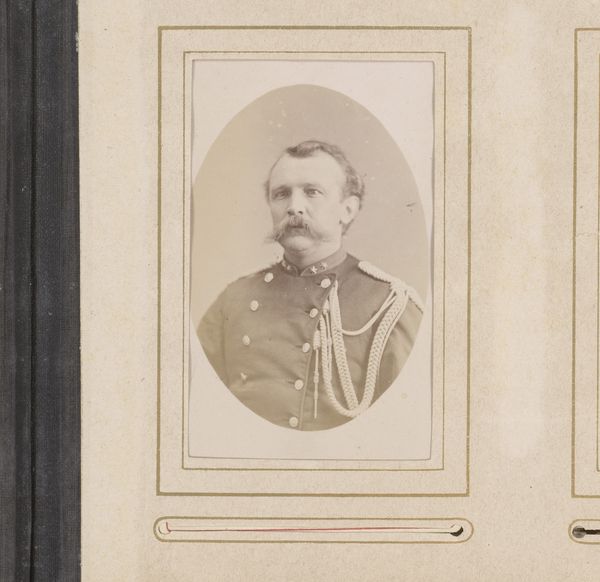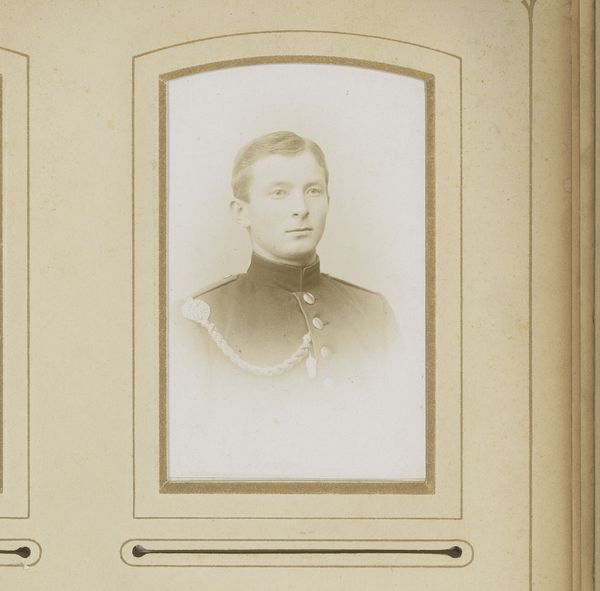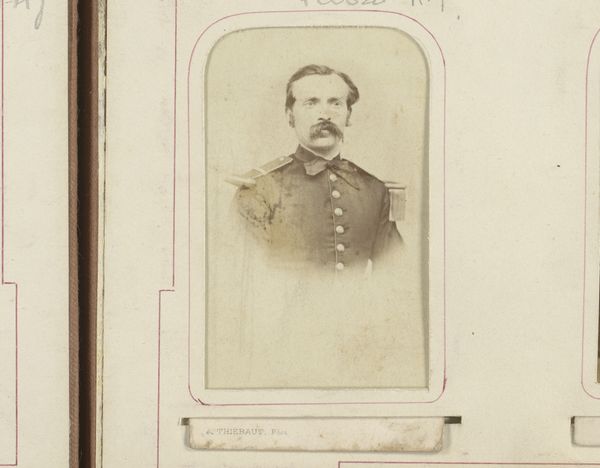
daguerreotype, photography
#
portrait
#
daguerreotype
#
photography
#
realism
Dimensions: height 81 mm, width 52 mm
Copyright: Rijks Museum: Open Domain
Editor: Here we have a portrait of a young man, a daguerreotype dating from around 1850 to 1880, by J. Remde. There's a certain formality to it; a stiffness, almost, in the sitter's posture. What strikes you about it? Curator: It's more than formality; it speaks to the rigid social structures of the mid-19th century, particularly regarding masculinity. Notice the military attire. What does it signify to you? How does it frame our understanding of identity and power during that era? Editor: I guess it speaks of duty, perhaps even the romanticism associated with military service at the time. But what about the individual within that uniform? Curator: Precisely. It's about how societal expectations, and indeed the state itself, shape individual expression. Think about the rapid advancements in photographic technology during this period, and how photography itself was used to document, categorize, and even control populations. Can you see the connections between portraiture, power, and control? Editor: So, it's less about this one man, and more about what he represents within the context of 19th-century society and the burgeoning power of the photographic image? Curator: Exactly. The individual is almost secondary to the broader socio-political narrative being constructed here. These images were carefully staged. What choices do you think Remde made when composing this picture? Editor: The severity of his expression, definitely intentional. Perhaps also, the fact that his features look… airbrushed, in a way, maybe? Curator: It points to the calculated manipulation involved. What do we make of photography and this search for objective realism, yet they still manipulate our perceptions through deliberate stylistic choices. Thank you for illuminating my understanding as well.
Comments
No comments
Be the first to comment and join the conversation on the ultimate creative platform.
